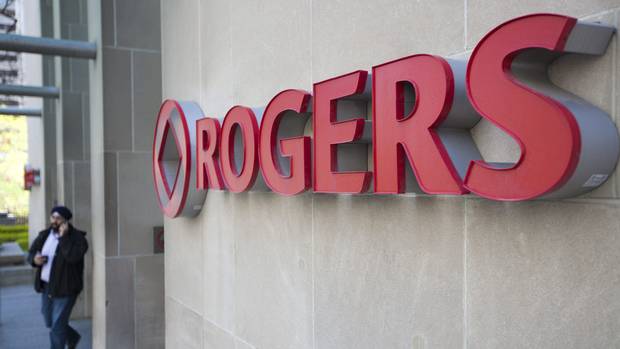by Jeffrey Roach, PhD, Chief Economist, LPL Financial
Key Themes for the Rest of the Year
- As we prepare for what’s ahead, the domestic economy looks to be late cycle, and recent data suggests the consumer is becoming a bit more selective on how and where to spend.
- We expect economic activity to downshift later this year as data from both the Conference Board and the University of Michigan revealed that most consumers have pivoted away from big-ticket buying plans.
- These changes in buying plans could have knock-on effects in other categories of the economy, such as housing. The geographic reshuffling may be over in earnest as opportunities for remote work are likely shrinking in response to an overall cooling of the labor market and as corporate policies are getting less flexible on work arrangements.
- But so far, risk appetite is elevated given investors’ expectations that the Fed will start cutting rates soon.
Let the Good Times Roll…But for How Long?
Investors recently responded favorably to current conditions and put more risk in their portfolios. The latest data show inflation rose a mere 0.07% as goods prices declined 0.17% but were offset by services prices up by 0.20%. Inflation continues to moderate and is slowly approaching the Fed’s target and giving the markets some confidence that the Fed will begin cutting rates at the September meeting.
Looking deeper into the data, there are a few bright spots. Rent prices rose 0.26% month-to-month, back to pre-pandemic averages, and prices on goods declined for the second consecutive month as consumers showed less demand for goods purchases. Services prices are moderating as most services ex-housing have eased or outright declined.
Sticky Services Inflation Turned a Corner

Inflation continues to moderate and is slowly approaching the Fed’s target. At the upcoming Fed meeting, we should expect the Fed to highlight the slowdown in hiring as one reason to cut rates at the September meeting. As it relates to business activity, real disposable income per capita continues to rise, giving consumers the ability to keep spending despite high price levels. So, we are paying more, but we are getting paid more.
Leading indicators for services inflation suggest the deceleration should continue. The Employment Cost Index (ECI), a comprehensive measure for labor costs, indicates further deceleration in inflation.
Easing Labor Costs Will Further Dampen Services Inflation

Less Rate Sensitive
As the population ages, the economy becomes less interest rate sensitive, and this is likely one area of concern for policy makers. At the upcoming summer conference in Jackson Hole, Wyoming, the Fed will reassess monetary policy after experiencing such a long period where higher interest rates have not created as much pain as anticipated. The Jackson Hole Symposium for global central bankers is titled “Reassessing the Effectiveness and Transmission of Monetary Policy” and hints at the policy challenges in a post-pandemic world. This event will be very important as we expect Fed Chairman Jerome Powell and other leaders to talk more and more about the challenges of monetary policy in a world less sensitive to interest rates.
One of the Fed’s monetary tools involves setting the federal funds rate, an interest rate that influences other market rates such as bank loans, CD rates, and mortgage rates. Typically, higher rates will slow the economy and release some of the pressure on consumer prices. But that hasn’t happened, at least not uniformly across the economy, nor at the same magnitude as previous years. One reason some parts of the economy appear immune to high rates is the growing percentage of homeowners who either don’t have a mortgage at all or have a mortgage they refinanced in 2020 or 2021.
More Consumers Without Mortgages Make the Economy Less Interest Rate Sensitive

We Have a Delayed Landing…But Still a Landing
Recent data on refinancing activity provides a clue on why the economy has experienced a delayed landing. The housing market often explains a lot of what is happening in other sectors of the economy, and this time is no different. Roughly one-third of mortgages were refinanced in the quarters following the pandemic recession of 20201. And because of 2020's extremely low mortgage rates, these homeowners lowered their monthly payments, thereby increasing their disposable income. Other homeowners took advantage of healthy home equity and took cash out to support more spending.
Billions in Tapped Home Equity Spurred Spending

The incredible impact of such historic refinancing activity caught many, including us, by surprise. In addition to the oft-mentioned excess savings from stimulus, improved household financial conditions from low mortgage rates kept the economy out of the doldrums. As we look ahead, however, the domestic economy looks to be in a late cycle, and recent data suggests the consumer has started to slow down. We indeed expect the consumer will slow spending later this year as data from both the Conference Board and the University of Michigan revealed that most consumers have pivoted away from big-ticket buying plans. These changes in buying plans could have knock-on effects in other categories of spending. Investors should anticipate a forthcoming downshift in consumer activity.
Asset Allocation Views
The LPL Strategic and Tactical Asset Allocation Committee (STAAC) maintains its recommended neutral equities allocation amid a favorable economic and profit backdrop. Interest rates may need to fall for valuations to hold, so potential second-half gains are more likely to be driven by earnings growth. The Committee remains comfortable with a balanced approach to market cap. High-quality small cap stocks are attractively valued, but the earnings power among large cap companies overall, has been very impressive. The Committee maintains a slight preference towards large cap growth. Artificial intelligence (AI)-fueled earnings growth, potentially lower interest rates as the economy slows, and our technical analysis work favors the growth style. Finally, the STAAC’s regional preference remains U.S. over developed international and emerging markets (EM) due largely to superior earnings and economic growth in the U.S.
The STAAC continues to recommend a modest overweight to fixed income, funded from cash, with a strong overweight tilt in preferred securities as valuations remain attractive and a recommended neutral duration posture relative to benchmarks. The risk/reward for core bond sectors (U.S. Treasury, agency mortgage-backed securities (MBS), investment-grade corporates) is more attractive than plus sectors.
Copyright © LPL Financial
















